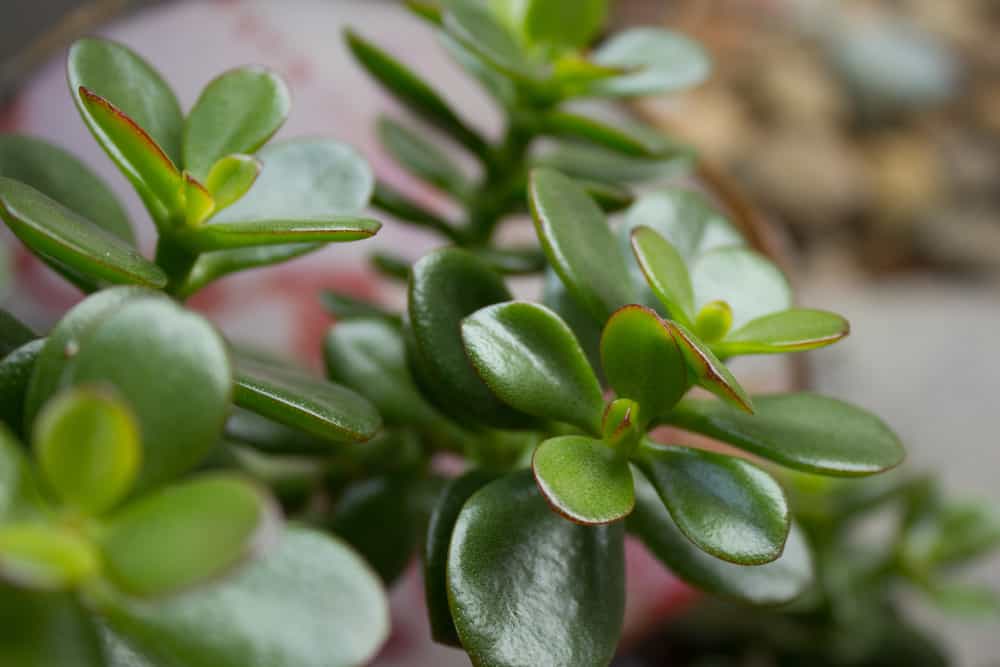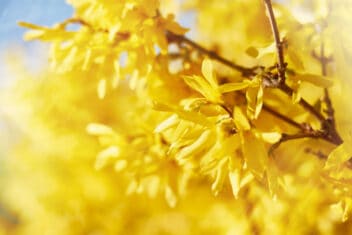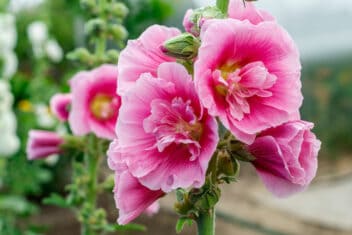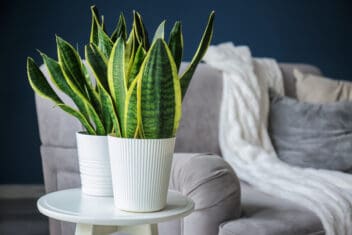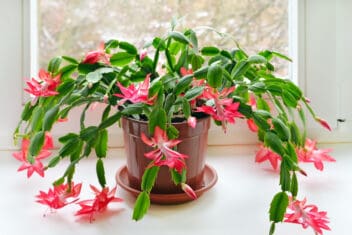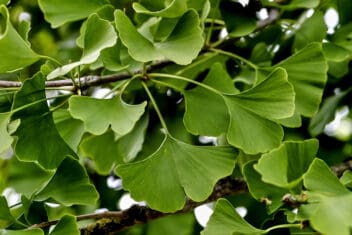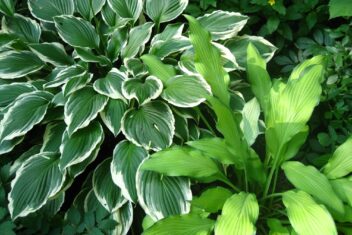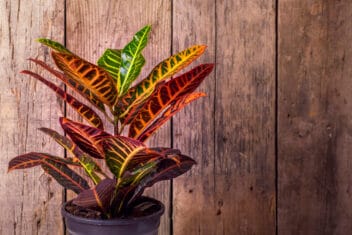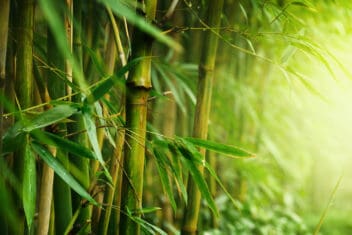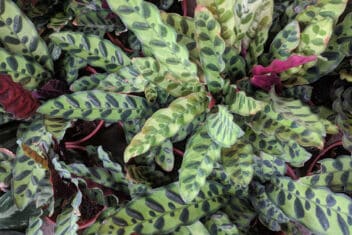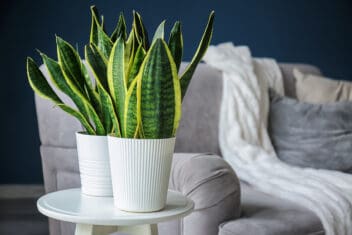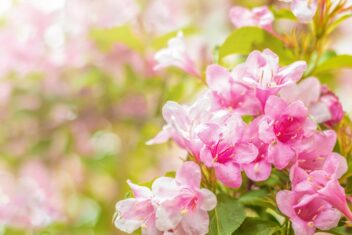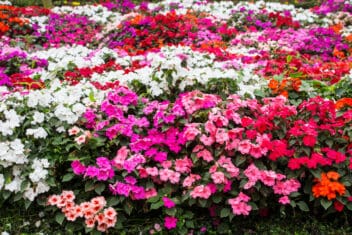When it comes to houseplants, low maintenance is key for me. If I’m busy, or I go away for the weekend, I want to know I won’t come home to a dead or struggling plant. That’s why growing dwarf jade is the perfect choice for me.
Growing any plant takes patience and care, so I want to make sure the houseplants I grow last as long as possible.
Succulents are the way to go if want nice plants around the house but don’t want to spend too much time fussing with them.
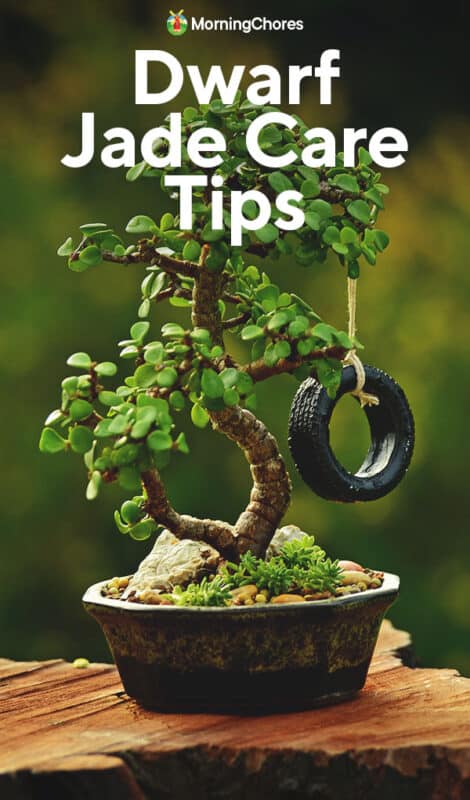
What is Dwarf Jade?
Dwarf jade (Portulacaria afra) is a succulent native to South Africa where it’s usually found in the form of a small shrub or tree. Outside of South Africa, we usually grow it as an indoor houseplant.
It’s known by various names including miniature jade, elephant bush, small leaf jade, and elephant plant.
Dwarf jade has tear-drop-shaped leaves off red to brown stems. You can grow it in a pot or some cultivars have a creeping habit, so you can grow them in a hanging basket where they will sprawl down the sides. This succulent is a slow-growing plant and it lives a long time with the right care.
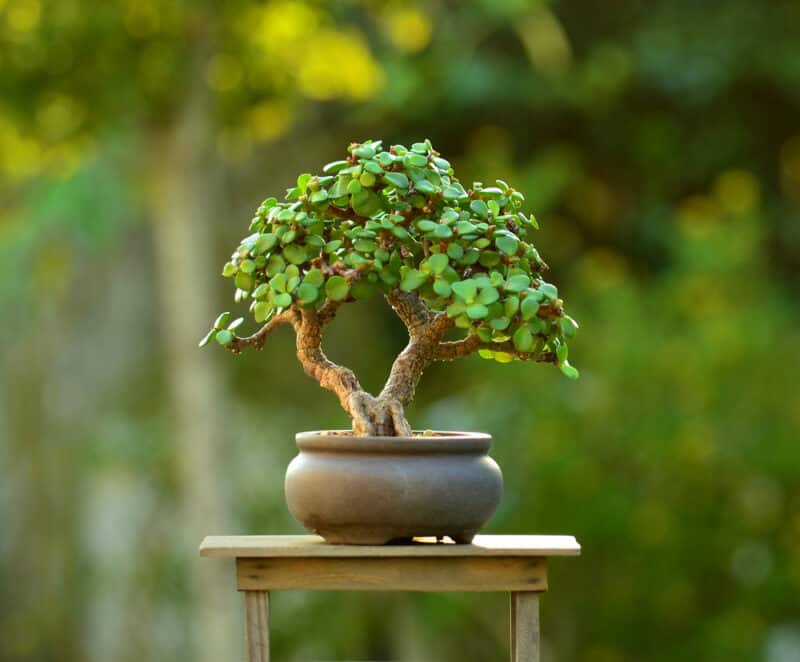
Grown in its natural environment, dwarf jade will reach up to 15 feet high. Indoors in pots, it has the appearance of a tiny tree, which makes it good for bonsai. If you’re not into bonsai, don’t worry, you can still grow a cool-looking succulent that can be passed to future generations.
You can move the plant outside in the warmest months as long as the temperature remains consistent. This way you have a plant that provides interest both indoors and outdoors.
Best Cultivars of Dwarf Jade
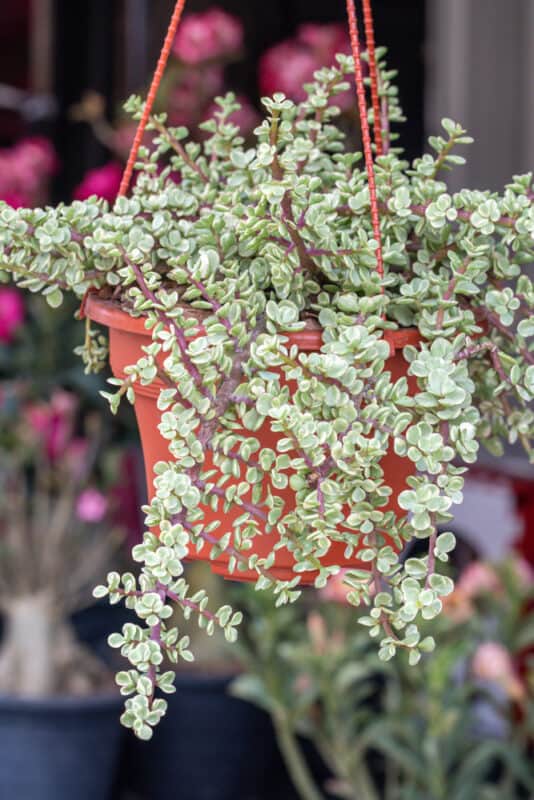
Dwarf jades are popular plants and they have been cultivated into many different options. Here are some of the more popular or worthwhile cultivars:
Aurea
Sometimes this cultivar is called yellow rainbow bush because the leaves start off as bright yellow, turning lime green as the plant gets older.
Limpopo
‘Limpopo’ probably has the biggest leaves of all the cultivars and can grow reasonably large over time.
Cork Bark
This is the cultivar to use if you are going to be growing dwarf jade as a bonsai. The plant ends up with a corky bark giving it the aged look you want with bonsai.
Medio-Picta
Otherwise known as mid-stripe rainbow bush, this cultivar has delicate, petite leaves.
Prostrata
This is a trailing cultivar that is good for ground cover, a hanging basket, or growing along a mantle or similar.
Variegata
This is quite a common cultivar. The leaves are a mixture of cream and light green variegation.
Propagation
Being a succulent, dwarf jade is easy to propagate.
- Take a stem cutting at least three inches long. You want at least two sets of leaves on the upper end of the cutting. A well-established plant is best to use for propagation.
- Place the cutting in a warm spot for several days to allow the cut end to callous over. This will prevent rotting and encourage root formation later.
- Take a small pot with moist seed-raising soil in it. Push the cut end into the soil so the cutting is standing upright. Sometimes a few smooth stones may be needed to help it stay standing. Don’t water any more than moistening the soil at the start.
- Within a week the plant should start rooting. Give it another week or two before giving the plant a gentle tug to see if it has formed a good root system. You should feel a little resistance to pulling.
- Give the plant a good watering, being careful not to flood the small pot.
- Transplant when it is at your desired height.
Growing Dwarf Jade Inside
The optimal temperature inside for dwarf jade is 60ºF to 71ºF.
Use a very good quality potting soil and mix it 50/50 with equal parts pumice, sand, and/or vermiculite.
Make sure the container drains well and doesn’t allow water to stand too long. Use an unglazed clay pot if possible.
Avoid placing it next to an AC unit or anywhere there may be a sudden breeze. Even a slight breeze can negatively impact an indoor dwarf jade.
Place where the plant will receive about six hours of bright, indirect sunlight. Direct sunlight can result in sunscald or cause dwarf jade to lose leaves.
If the plants don’t get all the indirect sunlight they need, they become leggy and top-heavy. In winter months, move dwarf jade away from cold windows, but close enough to take advantage of the indirect light.
Watering
Watering dwarf jade correctly is important. Many issues can be avoided with watering how your plant likes. Water deeply so that the whole pot is moist, not just the surface. Don’t water again until the soil is mostly dry.
Depending on the size of your container and other environmental factors, you may water once a week, or even once a month.
Dwarf jade is sensitive to some chemicals and salts in tap water. Use distilled water or collected rainwater if you can.
One way to figure out if your giving the plant the right amount of water is to monitor the leaves. If you get brown spots on the leaves, they shrivel up, or the leaves drop off for no reason, it may be thirsty.
If the leaves appear squishy, stop watering for a while because the plant is getting too much.
Reduce watering in the winter months because this is normally when the plant becomes dormant.
Dwarf jade doesn’t need much fertilizer. If the plant looks a little worse-for-wear, stunted, or struggling, try giving it some houseplant fertilizer, but dilute it 50/50 with water. Use a fertilizer specifically for succulents or cacti.
Repotting and Pruning
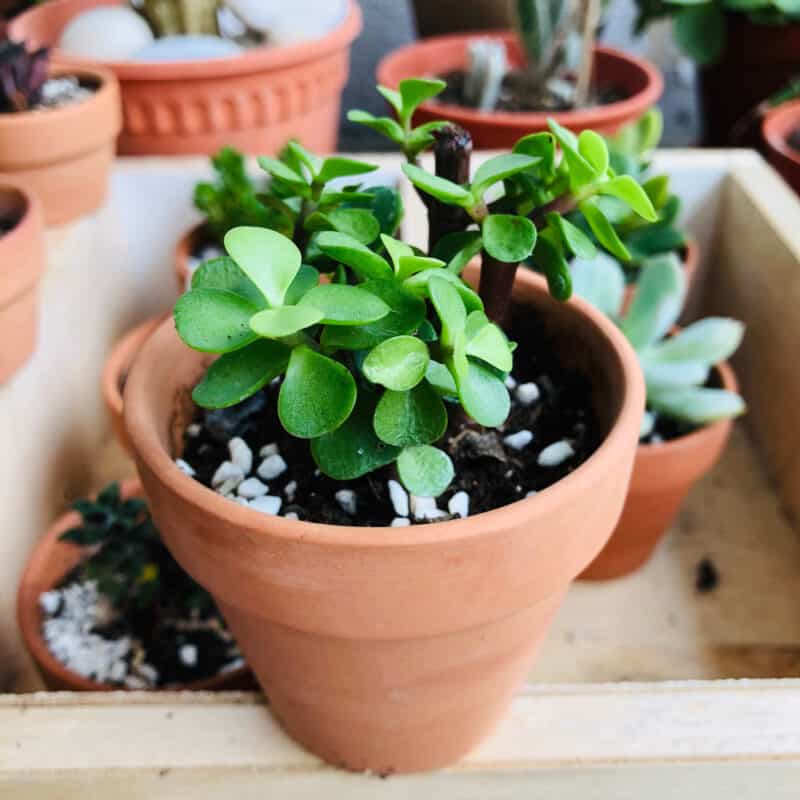
The best time to prune is when the soil is dry, but before the plant needs watering. This ensures the leaves, stems, and trunk aren’t filled with water. Prune to your desired shape, remove any dead or dying leaves, and any shoots growing out from the lower trunk if you want a tree shape.
Once the cuts have been calloused over for a couple of days, start watering again.
Although a slow-growing plant, you may need to repot your dwarf jade after a few years. One sign your dwarf jade needs repotting is when you see lots of root material clogging up the drainage holes.
Once you have repotted it, allow the soil to dry out for a week before watering. You want the roots to be dry first because watering straight away can cause root rot.
Growing Dwarf Jade Outside
Dwarf jade is a lovely option for growing as a landscape plant if your conditions are right. That means not too much moisture and temperatures that don’t get too cold. Temperatures much below 50ºF will certainly kill it. Any presence of frost and this plant will suffer badly – if it survives.
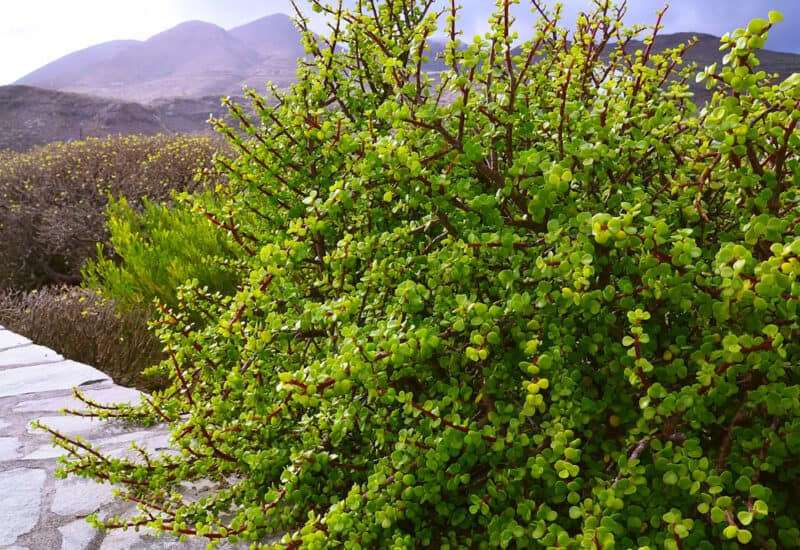
You can grow dwarf jade outside in USDA Growing Zone 9b to 11. Space the plants about 40 inches apart. In any area where the temperature goes below 50ºF, you will need to plant in containers and move them inside until it’s warm enough again.
Plant in containers to maintain a smaller plant, or use as a hedge and you may get the dwarf jade up to 10 feet tall. They are slow growers though.
Daytime temperatures should be around 60ºF or above. The perfect nighttime temperature is around 55ºF.
If you have lots of rain or high levels of humidity, root rot or fungal infections may be a problem. Dwarf jade prefers arid environments when outside.
Dwarf jade can be a little fussy with its soil requirements. The pH level needs to be between 5.6 and 6.5. Plant in quick-draining, loamy, rich soil.
Dwarf jade needs to be growing somewhere it will receive about four hours of direct sunlight. A little shade in the hottest part of the day is good.
Common Problems and Solutions for Growing Dwarf Jade
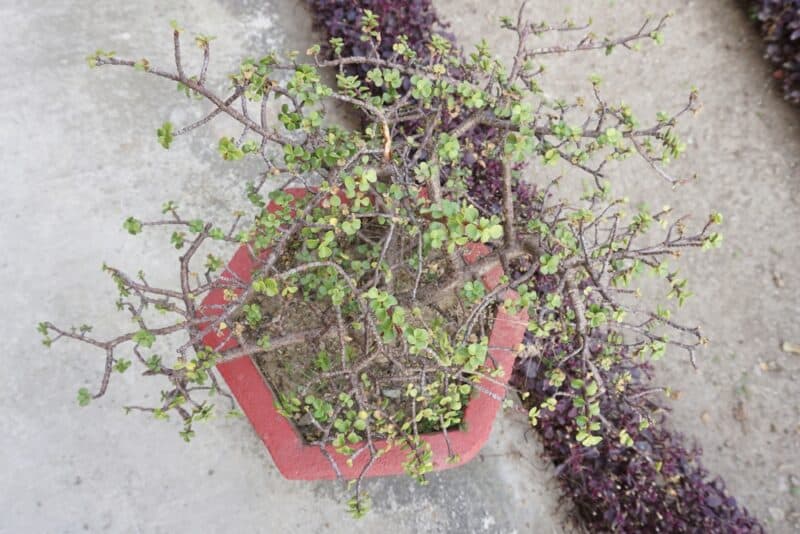
While there aren’t too many pests and diseases that impact dwarf jade, you do need to keep an eye on the conditions or you might run into problems. Here are some of the things to watch for:
Yellow Leaves That Fall Off
If the leaves on your plant turn yellow and fall, it’s usually caused by overwatering. If a dwarf jade sits in water, or the soil doesn’t drain properly from the container, it becomes overly saturated and the roots can’t access oxygen.
The yellowing of leaves may or may not be combined with root rot.
Yellow Leaves That Shrivel
Yellow, shriveled leaves are usually caused by under-watering. The leaves will turn yellow and fall off, as described above, but they shrivel up and die before they drop.
Older Leaves Dropping Off
This is a sign of too much heat. Many people move their dwarf jade plants close to a heating source in the winter, but this can cause the plant to become overheated. If older leaves drop off in the summer, the plant may need to be in a cooler area, or where there is some very gentle airflow.
Black Mold in the Leaves
This is a sure sign of excessive humidity. Wipe the mold off with a clean, damp cloth. Use warm soapy water if necessary. Move the plant to an area with less humidity, if possible.
White Mold on the Soil Surface
If you see a sort of white mold or fungus on the surface of the soil, you’re probably overwatering or adding too much fertilizer. Gently remove the top layer of soil. Replace it if necessary. Amend the amount of watering and fertilizer.
Leggy Growth
Leggy growth is normally due to insufficient sunlight. Even though the plant should be in indirect sunlight, it still needs light.
The nodes between the leaves will stretch out to find the sun giving the plant a leggy look, rather than a nice compact growth pattern. Provide more indirect sunlight by moving it closer to a window or use a grow light if necessary.
Root Rot
If the roots sit in wet soil, a lack of oxygen will cause them to rot. If your plant looks yellow, is wilting for no reason, or simply looks like it’s going to die, consider root rot.
Carefully remove the plant from the pot and examine the roots. If they are black, squishy, or rotten, trim the diseased parts off.
Clean the container or use a new one. Replant with new potting soil and water less frequently.
Mealybugs
Mealybugs are the most common pest for dwarf jade growing indoors. They’re easy to control if you keep an eye out for them. Read our article on mealybugs here.
Using Dwarf Jade
You might be perfectly happy to use dwarf jade in a purely ornamental way, but it’s also edible if you’re interested. It has a sour flavor that makes a nice addition to soups and salads.
